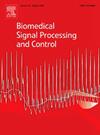Sleep apnea syndrome classification based om temporal ECG and SPO2 by using multimodal multichannel transfer module with squeeze and excitation
IF 4.9
2区 医学
Q1 ENGINEERING, BIOMEDICAL
引用次数: 0
Abstract
Sleep Apnea Syndrome (SAS) is a prevalent sleep disorder characterized by intermittent pauses in breathing during sleep. If undiagnosed and untreated, SAS can have significant adverse effects on the human physiological system. Polysomnography (PSG) has been regarded as a gold-standard examination method for diagnosing sleep snoring (sleep apnea-hypopnea syndrome, OSAHS), but is often seen as inconvenient due to its complex operational requirements. This study introduces a novel method for SAS detection using temporal ECG and SPO2 signals via a CNN-RNN based Multimodal Multichannel Transfer Module with Squeeze and Excitation (MMTM-SE). Three hybrid CNN-RNN models were developed to extract features from ECG and SPO2 data. These extracted features were then fused through MMTM-SE structure, so as to enhance the correlation between different modalities and adaptively recalibrate channel features. The proposed method was validated by using the Apnea-ECG database across three deep learning networks. The experimental results show that the proposed approach outperformed existing methods, achieving a highest detection accuracy of 98.9%.
求助全文
约1分钟内获得全文
求助全文
来源期刊

Biomedical Signal Processing and Control
工程技术-工程:生物医学
CiteScore
9.80
自引率
13.70%
发文量
822
审稿时长
4 months
期刊介绍:
Biomedical Signal Processing and Control aims to provide a cross-disciplinary international forum for the interchange of information on research in the measurement and analysis of signals and images in clinical medicine and the biological sciences. Emphasis is placed on contributions dealing with the practical, applications-led research on the use of methods and devices in clinical diagnosis, patient monitoring and management.
Biomedical Signal Processing and Control reflects the main areas in which these methods are being used and developed at the interface of both engineering and clinical science. The scope of the journal is defined to include relevant review papers, technical notes, short communications and letters. Tutorial papers and special issues will also be published.
 求助内容:
求助内容: 应助结果提醒方式:
应助结果提醒方式:


